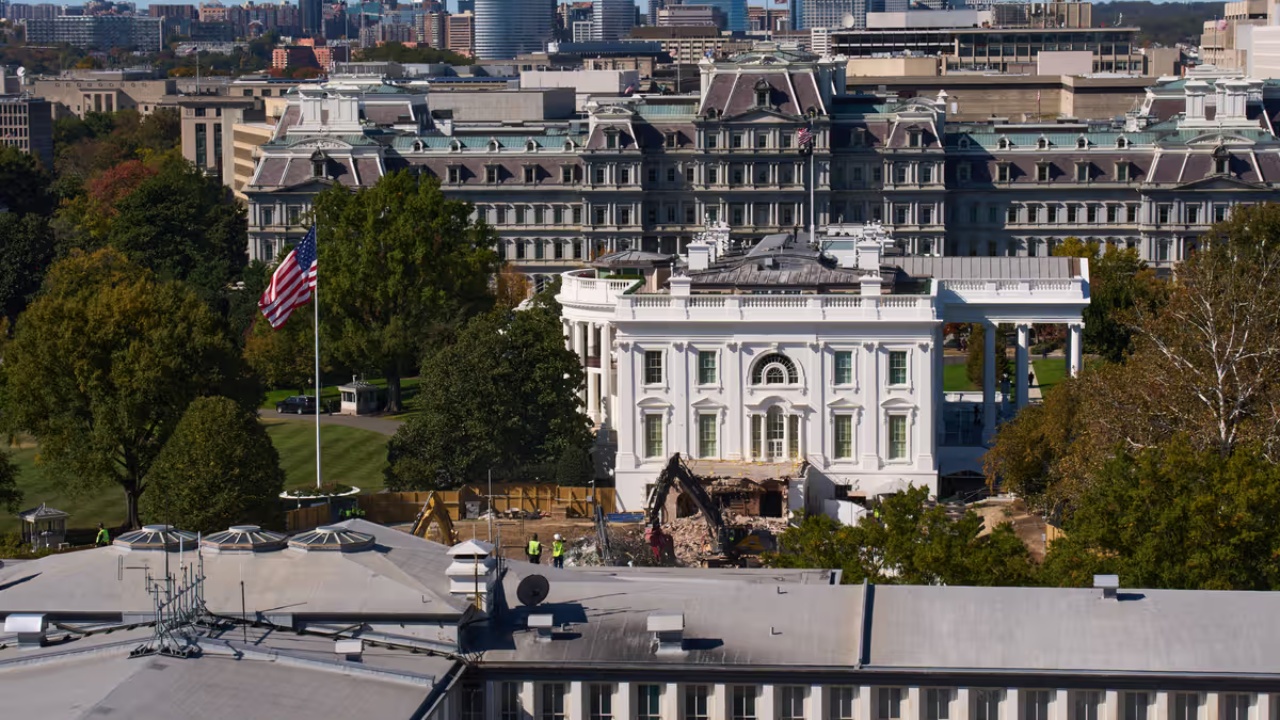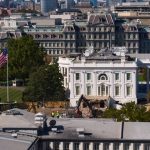For over a century, the East Wing of the White House served as the elegant and bustling front door for thousands of tourists, the operational heart for a century of first ladies, and a silent guardian housing a secret bunker for national emergencies. Its recent demolition to make way for a new ballroom has sparked a national conversation, leaving many to wonder what exactly was lost within those walls. The wing was far more than just an office building; it was a living museum of American social and political life, a place where history was both made and quietly witnessed.
From its initial construction in 1902 as a grand entrance for carriage-borne guests to its wartime expansion in 1942, the East Wing evolved into a unique and multifaceted part of the presidential complex. It was a building of contrasts, housing both the public-facing ceremonies of state and the intense, private work of the first lady’s staff. To walk its halls was to traverse the narrative of modern America, from world wars to social movements, all coordinated from within its distinct, compact rooms.
You Might Like: The Obama White House Renovation: Art, Hoops, and a Home
More Than an Office: The East Wing’s Key Spaces
Stepping through the East Wing’s visitor entrance, you’d first encounter the Wood-Paneled Lobby. This was where the public’s experience of the White House often began. Adorned with portraits of past presidents and first ladies, this space set the tone for the grandeur to come. Guests on public tours would pass through here, moving through the Garden Room and then along the East Colonnade—a corridor with windows overlooking the Jacqueline Kennedy Garden—before finally entering the main Executive Residence. This journey was a carefully choreographed reveal of American history and beauty.
Beyond the public view, the East Wing was a hive of activity. Since 1977, when First Lady Rosalynn Carter formally established her office there, it has served as the official headquarters for the First Lady and her staff. This included a team dedicated to the immense task of managing White House social life: the Social Secretary, who planned everything from state dinners to holiday receptions, and the Graphics and Calligraphy Office, whose artists hand-addressed the thousands of invitations and place cards for these events. The wing also housed the White House Visitors Office, which coordinated public tours, and offices for legislative affairs and military aides who handled everything from transportation to medical services.
Satellite images show President Trump’s project to build a grand ballroom has appeared to take down at least six trees on the White House grounds — including two historic magnolia trees commemorating Presidents Warren G. Harding and Franklin D. Roosevelt. https://t.co/E9Epovw4wI pic.twitter.com/DNEubFKMzN
— ABC News (@ABC) October 25, 2025
But the East Wing wasn’t all work. It was also a place for presidential relaxation and family entertainment. Tucked within the East Colonnade was the White House Family Theater, a cozy cinema for the first family and their guests. Perhaps most intriguingly, buried deep beneath the building was the Presidential Emergency Operations Center (PEOC), a fortified underground bunker originally built during President Franklin Roosevelt’s administration in 1942. This secure facility, designed to protect the president during a crisis, became widely known to the public when Vice President Dick Cheney was rushed there on September 11, 2001.
Also See: The Family Story Behind Misty Copeland
The Heart of the White House
The demolition of the East Wing represents the loss of a space that was deeply woven into the fabric of the presidency. Its rooms witnessed the professionalization of the role of the first lady, from Eleanor Roosevelt’s groundbreaking press conferences to the launch of initiatives like Laura Bush’s literacy programs and Michelle Obama’s “Let’s Move!” campaign. As one historian noted, the space itself was a powerful symbol; its allocation to the first lady’s work signaled the importance of her role.
For decades, the East Wing balanced its dual identity as both a public gateway and a private sanctuary of power. It was, as former First Lady Betty Ford once eloquently put it, the “heart” of the nation, contrasting with the West Wing’s “mind.” Its halls absorbed the quiet intensity of legislative planning, the creative energy of social design, and the solemn gravity of national security. While a new ballroom will soon rise from the rubble, the specific, layered history of the East Wing—a place where Americans could literally and figuratively touch the presidency—is now part of the historical record, a chapter closed on a building that served its purpose for 123 years.








